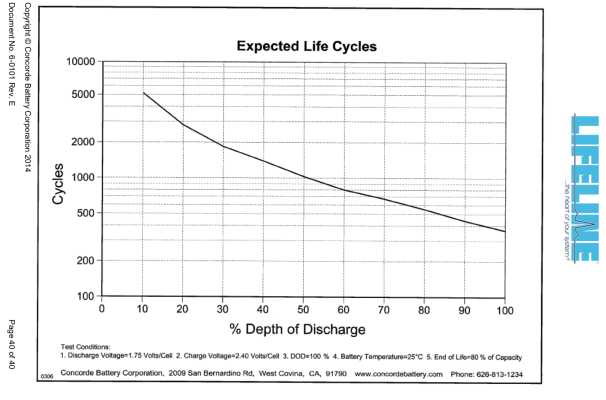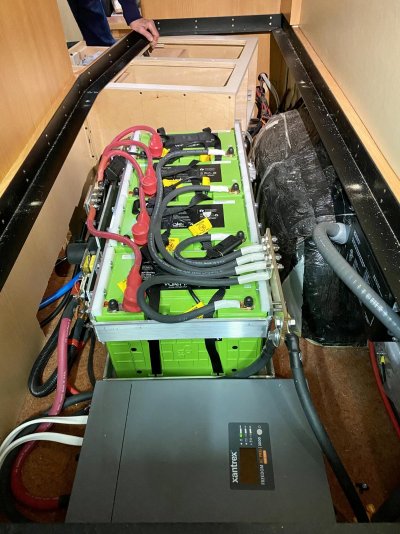I accept the depth of discharge comparison to total amp hours delivered as valid. A test I would like to see would be a rate of discharge and lifespan.
I would suspect that if a small load of 20A is used in one test and then compare it to drawing a 100A load. We might see a different story unfold when looking a battery types. With more AC loads in modern all electric RVs we see higher prolonged current draws than just a few years ago when I started, we had a couple lights and a furnace fan as our main load on the batteries.
But just the amount of time it takes to recharge a lithium battery is a big selling point for me. It used to take forever to stuff those last couple amp hours in a lead acid battery to fully charge them (which lead acid batteries should be kept at).
Yep, exactly my point, and add to it, as you say, you have to apply it to the real world of RVing.
The load thing is so highly variable depending on the RV and the user, that it all needs to be tested at more representative test points the would more closely come to real world use.
In many cases, the higher discharge rates and being able to hold voltage become non issues because there is not enough capacity to maintain it decently in battery bank. That is why a single lithium 100 amp hour battery is not as beneficial as it would be in a 400ah bank for instance because you run out of AH too quickly if you draw a big load.
Most of the systems that are being done in smaller bank also seem to increasing bank size and that in itself is a bit deal in use. The savings of weight and space with lithium can help in that kind of install, except they should be inside the van which can hurt space. Lithium also often takes more charging and control equipment which east s up space.
On the small, more drop in type, installs that are being done it will of interest to see how the life of the lithium batteries is. Lead acid can last a long time with very good charging, which few systems have, and we routinely see considerably shorter life based on that. It may also be true for lithium.
It will be interesting to see where the final charge rate limits settle in at. In the beginning of all the lithium stuff we saw them touting 3C rates for instance, but now we see Battleborn, who also used to be very high rate charging, at .5C for instance. That will lengthen the charge time but still not as long a time as an AGM would take, if you go to full charge based on return amps. Of interest, I think, and at least to me

, is that with Battleborn at .5C the charging from 20% SOC to about 80% SOC would be only 1.25 times faster than AGMs charged at .4C which is about the max we can do continuously. This means putting a day or two use back in a bank would take nearly the same amount of time. You do need to take the AGMs to full charge every 7-10 cycles though to maintain life, where with the lithium you would want to leave the under full charge for longer life, from what we now hear.
The place were lithium stands out is in big bank, high draw amps, big daily use systems. The voltage holding properties and higher initial voltages help there, for sure. Running AC off of batteries for instance.
For more moderate daily use, but with need for lots of time off grid, an AGM large bank can work well as you don't need the high discharge rate and voltage holding as much. Put in a bit of solar to top off when in the final 20% SOC to maintain life.



